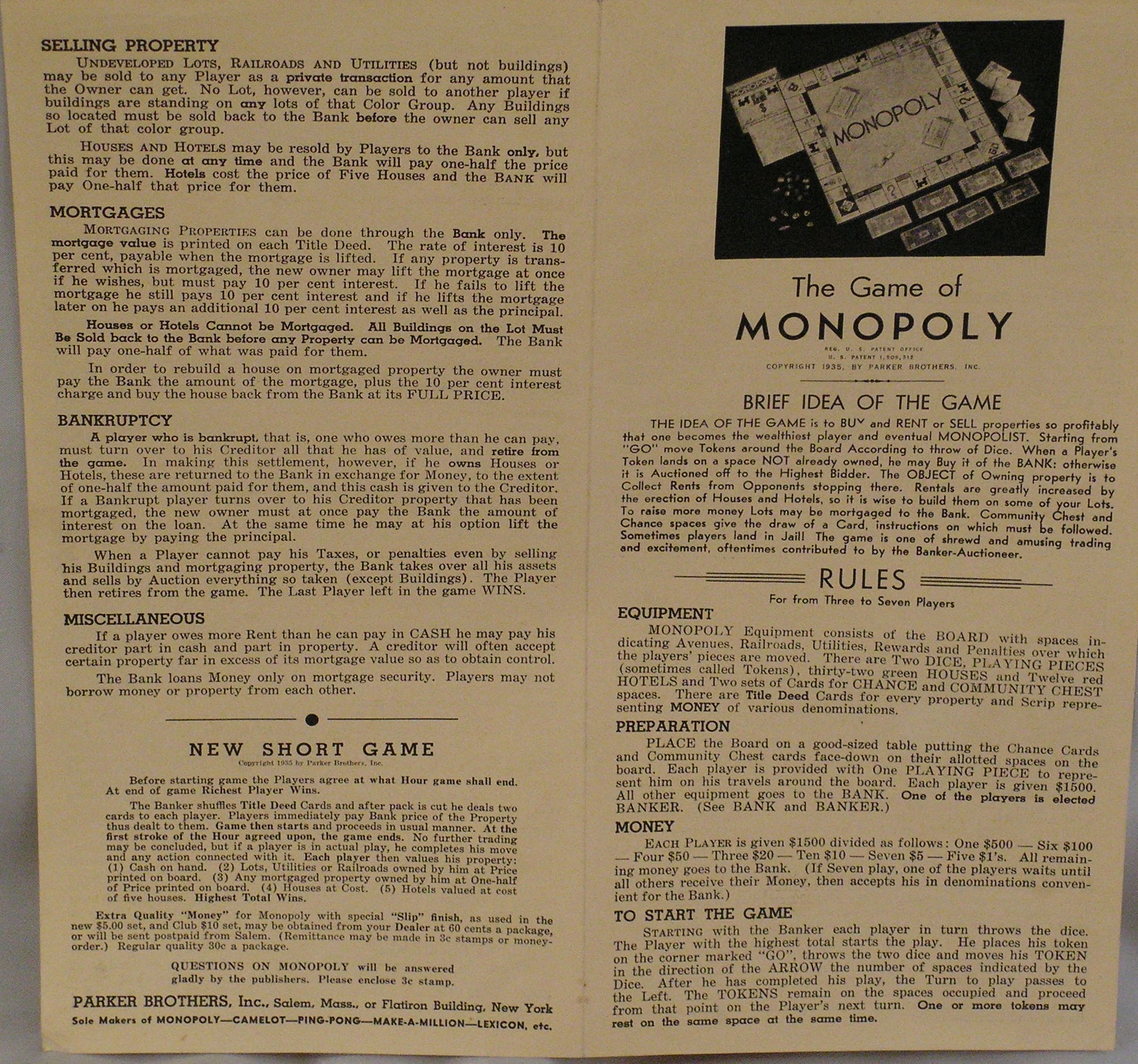As we’ve been narrowing in on the mechanics of game challenges, I’ve been researching and learning about how to write great game rules. Here is a rough framework to work from:
NAME OF THE GAME
designer, date, number of players, suggested age, average length
1. Make the narrative clear, outline the objective/goal
2. Materials needed, Equipment
3. Instructions for setting up, Preparation
4. How to win (winning condition)
5. Rules (from general to specific and special cases)
6. Tell players what they can do
7. End of the game victory conditions
The article, How to write rules without confusing people, this forum, and monopoly are helpful resources for writing game instructions.



do keep in mind that most people don’t read the instructions that come with games. i played monopoly for years without knowing the official rules. it was more fun that way :)
if you must have detailed rules though (as you guys probably do), consider how you deliver them so that people don’t avoid reading them. i think you guys intuitively knew this because you delivered most of the rules in KO2W in bite-sized chunks as challenge cards, rather than all at once. this kept a sense of anticipation going each week. also if people know the rules are necessary for success in the game, they are more likely to follow them.
timed-release rule-delivery aside, there will probably have to be a ramp up period in the beginning where a big chunk of foundational rules get laid out. this is a challenge/opportunity for designing a clever system of delivering rules that isn’t overwhelming (like the monopoly sheet up there), but still makes it clear what the rules actually *are*. i’m a big fan of how many video games have a “training room” or “newbie level” for you to get accustomed to the controls, before you jump into the real game world. that way it feels like you’re already playing, before you start playing.
last thing: i mentioned game design books to kristin last week. the classic one (in the video game industry) is: http://www.amazon.com/Art-Game-Design-book-lenses/dp/0123694965/ref=sr_1_1?ie=UTF8&qid=1323197623&sr=8-1 – and there is also http://www.amazon.com/Rules-Play-Game-Design-Fundamentals/dp/0262240459/ref=sr_1_14?ie=UTF8&qid=1323197623&sr=8-14 (yang has a copy at home that he can get for you)
i would really encourage you to leaf through at least one of these books b/c there is so much that goes into determining game rules. before you get to “how to write them down as to not confuse the user” you have to look at the game structure by rule and figure out “is this rule even necessary for gameplay or is it just a formality; does this rule add to the challenge or just impose an unnecessary on the player. etc” some games actually are completely founded on rules-for-formality (Dungeons and Dragons…) but others have very simple rules and are still very challenging to play (Go). different ppl have different tolerances for rule complexity too. so in the end, it all comes down to knowing what the options are, and optimizing the rules for your desired audience :)